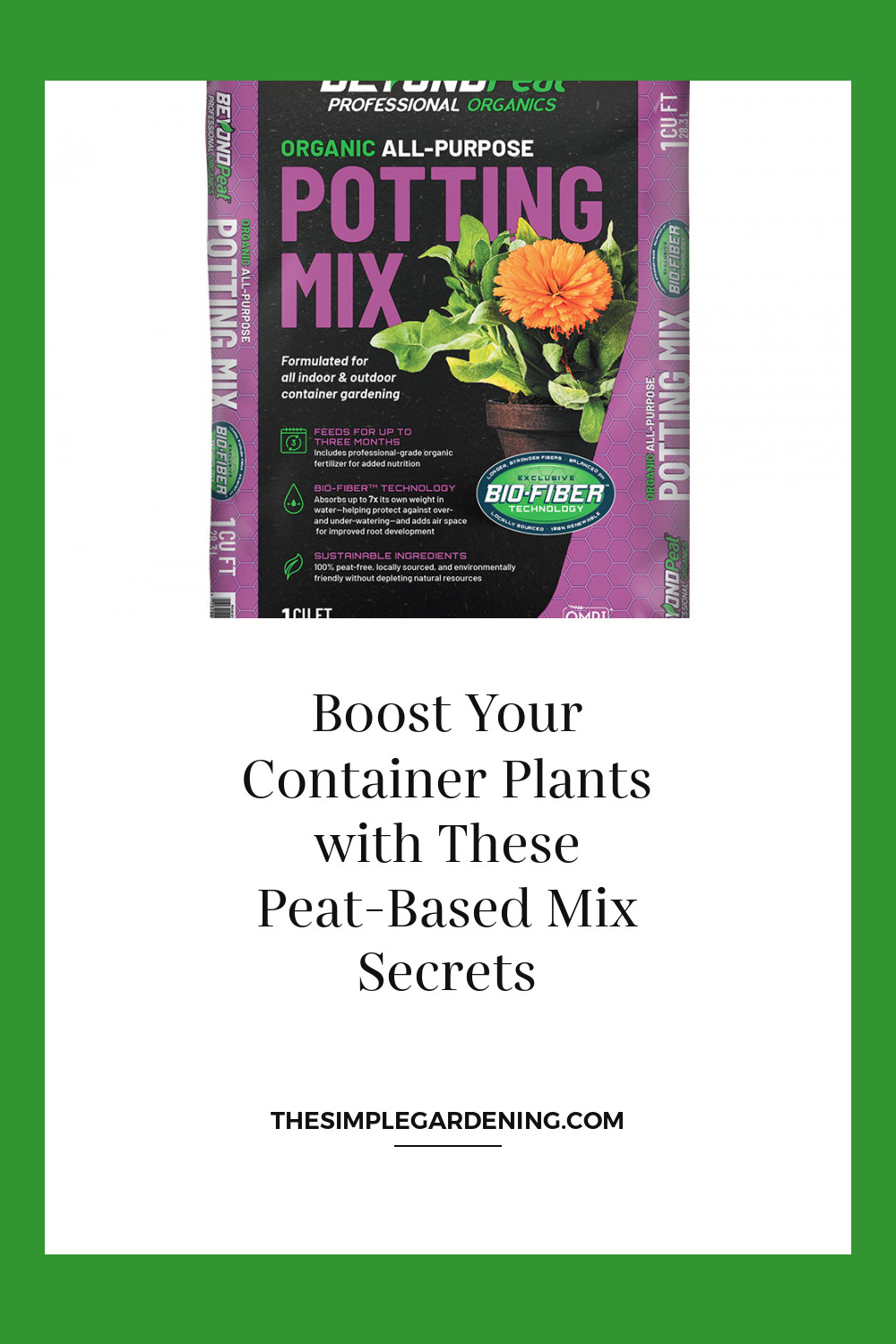Peat-based mixes have long been cherished by gardeners for their unique blend of properties that promote plant health and growth. Understanding their composition, benefits, and ecological impact is crucial for anyone looking to optimize their gardening practices. In this article, we’ll delve into the intricacies of peat-based mixes, exploring their historical significance, types, components, advantages, environmental considerations, alternatives, and practical tips for usage.
Definition and Composition
Peat-based mixes are formulated blends used as growing mediums in container gardening. These mixes primarily consist of peat moss combined with various additives like perlite, vermiculite, compost, bark, and sand. Each component plays a pivotal role in enhancing soil structure, moisture retention, and nutrient availability, crucial for robust plant development.
Historical Use in Horticulture
| Era | Significance |
|---|---|
| Ancient Times | Early civilizations utilized peat for fuel and bedding, later recognizing its horticultural benefits. |
| Middle Ages | Peat became prominent in European agriculture, enriching soils for improved crop yields. |
| Modern Era | Industrialized harvesting led to widespread use in commercial horticulture and home gardening. |
Peat’s historical journey underscores its evolution from a basic resource to a vital component in modern gardening practices.
Benefits of Peat-Based Mixes for Container Gardening
Peat-based mixes offer numerous advantages that contribute to successful container gardening. Their ability to balance water retention, drainage, and aeration creates an optimal environment for root development and nutrient uptake.
Types of Peat Used in Mixes
Peat sources vary in composition and origin, each influencing mix characteristics differently.
| Type | Characteristics |
|---|---|
| Sphagnum Peat | Lightweight, acidic; ideal for acid-loving plants. |
| Reed-Sedge Peat | Dense, fibrous; provides good structure and drainage. |
| Hypnum Peat | Fine texture, high water retention; suits moisture-sensitive plants. |
Understanding these types helps in selecting the right mix for specific gardening needs.
Differences and Specific Uses
| Aspect | Description |
|---|---|
| Texture and Density | Varies among types, affecting water retention and porosity. |
| pH Level | Influences suitability for acid-loving or alkaline plants. |
| Environmental Impact | Considerations like sustainability and carbon footprint differ per type. |
These nuances guide gardeners in making informed choices based on plant requirements and environmental concerns.

Source Image: gardeningleave.org
Components of Peat-Based Mixes
Peat-based mixes consist of several key ingredients and optional additives, each contributing uniquely to plant health and growth.
Key Ingredients
| Ingredient | Role in Peat-Based Mixes |
|---|---|
| Peat Moss | Provides structure, moisture retention, and aids in nutrient absorption. |
| Perlite | Improves drainage and aeration, preventing soil compaction. |
| Vermiculite | Enhances moisture retention and nutrient availability. |
These primary components form the foundation of a balanced growing medium, essential for cultivating healthy plants.
Optional Additives
| Additive | Benefits in Peat-Based Mixes |
|---|---|
| Compost | Adds organic matter, enriches soil fertility, and enhances microbial activity. |
| Bark | Improves aeration, helps retain moisture, and provides long-term nutrient release. |
| Sand | Increases drainage and prevents waterlogging in heavy soils. |
Incorporating these additives allows gardeners to customize mixes based on specific plant requirements and environmental conditions.
Role of Each Component in Plant Health
Each component in a peat-based mix serves a critical role in promoting plant vigor and resilience.
- Peat Moss: Acts as a sponge, holding water and nutrients while providing a stable environment for roots.
- Perlite: Enhances drainage and aeration, preventing root suffocation and supporting healthy microbial activity.
- Vermiculite: Improves water retention and nutrient availability, crucial for sustained plant growth.
Understanding these roles empowers gardeners to tailor mixes that optimize plant performance throughout various growth stages.
Advantages of Peat-Based Mixes
Peat-based mixes offer numerous benefits that cater to the diverse needs of plants grown in containers.
Water Retention and Drainage Balance
| Benefit | Explanation |
|---|---|
| Enhanced Water Retention | Peat’s sponge-like structure retains moisture, reducing watering frequency. |
| Improved Drainage | Perlite and vermiculite ensure excess water drains efficiently, preventing root rot. |
This balance is crucial for maintaining optimal soil moisture levels, essential for healthy root development and nutrient uptake.
Aeration for Root Growth
| Benefit | Explanation |
|---|---|
| Enhanced Aeration | Perlite and vermiculite create air pockets, promoting root respiration and growth. |
Healthy root systems depend on adequate oxygen levels, facilitated by a well-aerated growing medium.
Nutrient Availability and Retention
| Benefit | Explanation |
|---|---|
| Nutrient Absorption | Peat and compost enhance nutrient uptake, ensuring plants receive essential minerals. |
| Long-Term Nutrient Release | Organic additives like compost and bark gradually release nutrients, supporting sustained growth. |
Optimizing nutrient availability maximizes plant health and productivity, vital for achieving robust garden yields.

Source Image: virtual-strategy.com
Disadvantages and Environmental Impact
While peat-based mixes offer significant benefits, they also present challenges and environmental concerns that gardeners should consider.
Sustainability Concerns
| Issue | Explanation |
|---|---|
| Peat Bog Destruction | Harvesting peat moss disrupts fragile ecosystems, impacting biodiversity. |
| Carbon Footprint | Extraction and processing release carbon dioxide, contributing to greenhouse gases. |
| Slow Regeneration | Peat bogs regenerate slowly, taking decades or centuries to reform naturally. |
These factors highlight the importance of sustainable harvesting practices and exploring alternatives to minimize ecological impact.
Alternatives to Peat-Based Mixes
| Alternative | Benefits |
|---|---|
| Coir-Based Mixes | Derived from coconut husks, coir is renewable and offers similar properties to peat. |
| Soil-Based Mixes | Traditional soils enriched with compost and organic matter provide stability and fertility. |
| Peat-Free Commercial Mixes | Blend of materials like compost, coconut coir, and pine bark, offering sustainability. |
Exploring these alternatives allows gardeners to make eco-conscious choices aligned with sustainable gardening practices.
Choosing the Right Peat-Based Mix for Your Plants
Selecting the appropriate peat-based mix involves considering plant types, growth stages, and specific needs.
Matching Mixes to Plant Types
| Plant Type | Recommended Mix |
|---|---|
| Succulents and Cacti | Perlite-rich mix for excellent drainage and root aeration. |
| Tropical Plants | Peat moss blend with vermiculite for moisture retention in humid conditions. |
| Acid-Loving Plants | Sphagnum peat mix to maintain acidic soil pH levels. |
Understanding plant preferences ensures optimal growth conditions, enhancing plant health and vitality.
Considerations for Different Growth Stages
| Growth Stage | Recommended Practices |
|---|---|
| Seedlings | Light, well-aerated mix to promote root establishment and seedling growth. |
| Mature Plants | Nutrient-rich mix with slow-release additives for sustained growth and flowering. |
Tailoring mixes according to growth stages supports consistent plant development and yield.
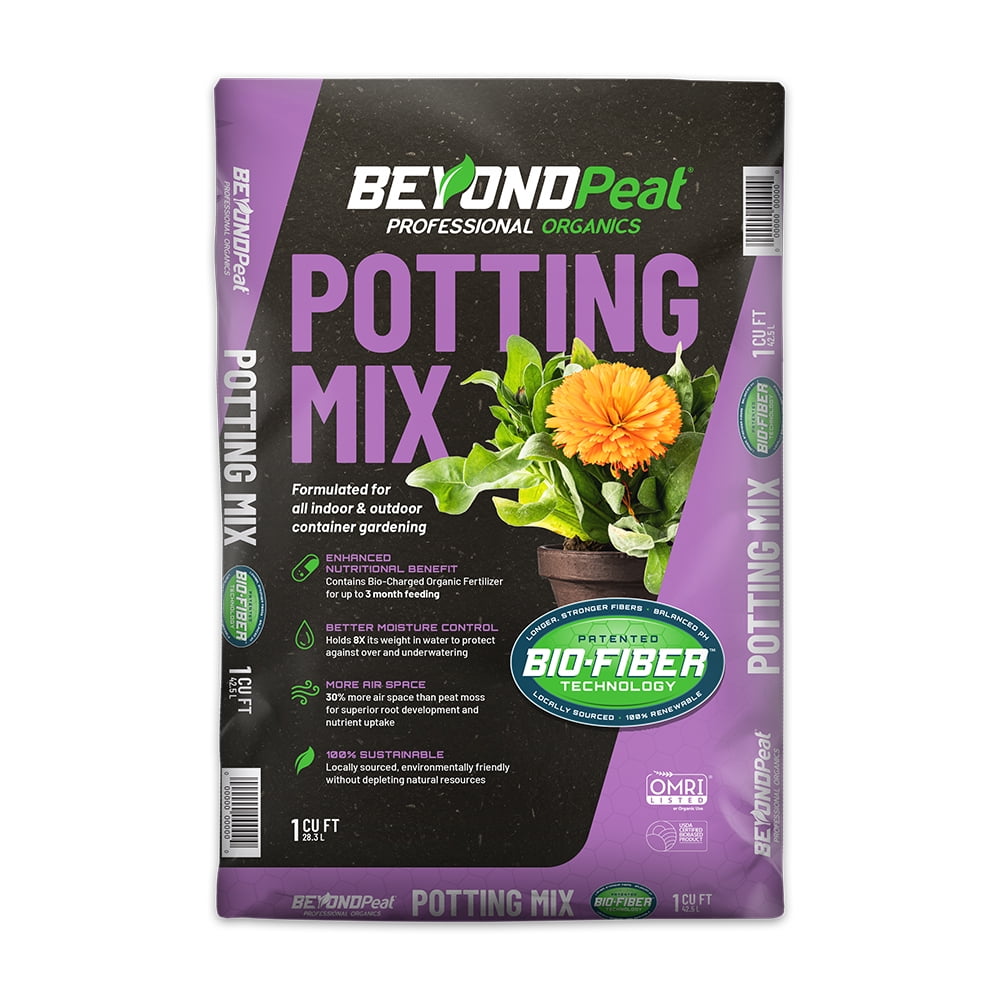
Source Image: www.walmart.com
Preparation and Storage of Peat-Based Mixes
Proper preparation and storage are essential for maximizing the effectiveness of peat-based mixes and ensuring plant health.
How to Properly Moisten and Prepare the Mix
| Step | Instructions |
|---|---|
| Moistening the Mix | Gradually add water while mixing to achieve desired moisture consistency. |
| Allowing Settling Time | Let the mix sit for a day to stabilize moisture levels before use. |
| Checking Texture and Drainage | Ensure the mix is crumbly and well-draining, suitable for planting. |
Properly moistened mixes provide an ideal environment for root growth and nutrient absorption.
Storage Tips to Maintain Quality
| Storage Method | Recommendations |
|---|---|
| Sealed Containers | Store in airtight bags or containers to preserve moisture and texture. |
| Cool, Dry Location | Keep mixes away from direct sunlight and moisture to prevent mold growth. |
| Regular Inspection | Check for moisture levels and consistency periodically during storage. |
Following these storage practices prolongs the shelf life and efficacy of peat-based mixes, ensuring they remain suitable for planting.
Avoiding Common Contamination Issues
| Issue | Prevention Tips |
|---|---|
| Mold and Fungus Growth | Use sterile containers and clean tools; avoid overwatering and ensure proper ventilation. |
| Nutrient Imbalance | Monitor pH levels and supplement with balanced fertilizers as needed. |
| Pest Infestation | Inspect plants regularly and treat affected areas promptly to prevent spread. |
Proactive management minimizes risks and maintains the health of plants grown in peat-based mixes.
Using Peat-Based Mixes in Different Container Types
Peat-based mixes are versatile and suitable for various container gardening setups, each requiring specific considerations.
Pots and Planters
| Container Type | Considerations |
|---|---|
| Terracotta Pots | Require frequent watering due to porous nature; choose mixes with enhanced moisture retention. |
| Plastic Pots | Maintain consistent moisture levels; use mixes with good drainage properties. |
Selecting the right mix and container type ensures optimal growing conditions tailored to plant needs.
Hanging Baskets
| Container Type | Tips |
|---|---|
| Coconut Fiber Liners | Use lightweight mixes to prevent overloading; ensure adequate drainage for hanging setups. |
Properly preparing mixes enhances plant support and growth in hanging baskets, promoting vibrant displays.
Window Boxes and Troughs
| Container Type | Guidelines |
|---|---|
| Shallow Depth Containers | Opt for mixes with good aeration and drainage; consider additional support for root systems. |
Choosing appropriate mixes facilitates healthy root development and longevity in window boxes and troughs.
Specialized Containers
| Container Type | Best Practices |
|---|---|
| Self-Watering Pots | Use mixes with balanced moisture retention to complement self-watering mechanisms. |
Adapting mixes to specialized containers optimizes watering efficiency and plant health maintenance.
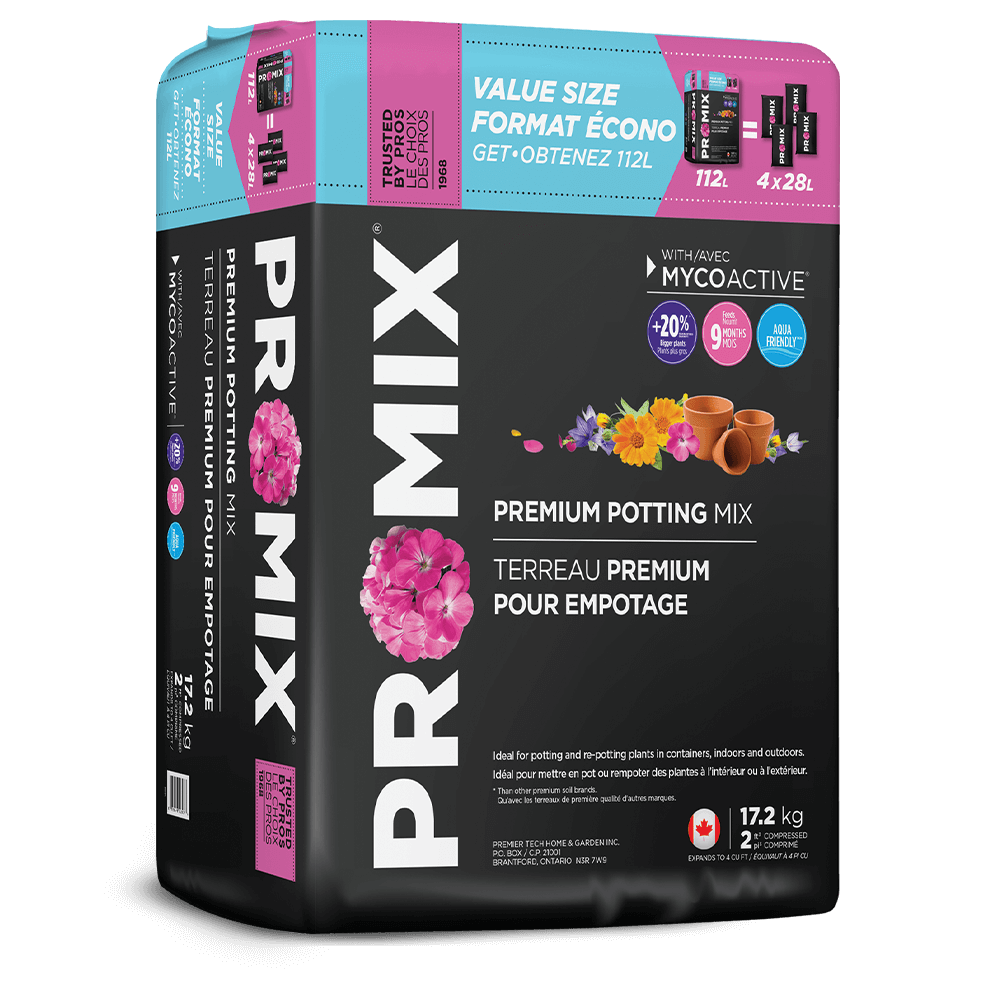
Source Image: www.promixgardening.com
Peat-based Mixes
Planting Techniques with Peat-Based Mixes
Proper planting methods are crucial for ensuring successful establishment and growth of plants in peat-based mixes.
Proper Potting Methods
| Step | Instructions |
|---|---|
| Choosing Container Size | Select containers based on plant size and growth habits; ensure adequate drainage holes. |
| Layering Mix | Fill containers halfway with mix, gently firming around roots during planting. |
| Watering Thoroughly | Water immediately after planting to settle the mix and hydrate the roots. |
Following these steps promotes healthy root development and reduces transplant shock.
Transplanting Seedlings and Mature Plants
| Growth Stage | Techniques |
|---|---|
| Seedlings | Handle with care to avoid damaging delicate roots; use nutrient-rich mixes for vigorous growth. |
| Mature Plants | Loosen roots gently during transplant; provide balanced nutrition for continued health. |
Adjusting planting techniques based on growth stage ensures plants thrive from transplantation to maturity.
Ensuring Optimal Root Establishment
| Root Growth | Strategies |
|---|---|
| Root Zone Management | Monitor soil moisture and nutrient levels; maintain suitable pH for root health. |
| Mulching | Apply mulch to retain moisture and regulate soil temperature around roots. |
Promoting root establishment enhances plant resilience and supports long-term growth in peat-based mixes.
Watering and Fertilization Strategies
Proper watering and fertilization practices are essential for maintaining plant health and optimizing growth in peat-based mixes.
Best Practices for Watering Peat-Based Mixes
| Watering Technique | Guidelines |
|---|---|
| Watering Frequency | Adjust based on plant needs and environmental conditions; avoid waterlogging. |
| Deep Watering | Ensure thorough hydration to encourage deep root growth and nutrient uptake. |
Consistent watering habits promote healthy plant development and prevent moisture-related issues.
Suitable Fertilizers and Application Methods
| Fertilizer Type | Application Tips |
|---|---|
| Slow-Release Fertilizers | Incorporate into mix during planting for gradual nutrient release over time. |
| Liquid Fertilizers | Apply during regular watering cycles for quick absorption and growth boosts. |
Choosing appropriate fertilizers enhances nutrient availability, supporting robust plant growth and flowering.
Monitoring Plant Health and Adjusting Care
| Plant Care | Monitoring Techniques |
|---|---|
| Visual Inspection | Check leaves and stems for signs of nutrient deficiencies or pest infestation. |
| Soil Testing | Conduct regular pH and nutrient tests to adjust fertilization as needed. |
Proactive monitoring and adjustments ensure plants receive optimal care, maximizing their potential in peat-based mixes.
Source Image: gardeningleave.org
Maintenance and Refreshing Peat-Based Mixes
Regular maintenance ensures longevity and effectiveness of peat-based mixes, promoting sustained plant health and growth.
Signs It’s Time to Refresh the Mix
| Indicators | Signs |
|---|---|
| Compacted Texture | Mix feels dense and hard, hindering root penetration and water absorption. |
| Nutrient Depletion | Plants show stunted growth despite regular fertilization; leaves pale or yellow. |
Recognizing these signs prompts timely action to rejuvenate the mix and maintain optimal growing conditions.
How to Safely Replace or Rejuvenate Mixes
| Refreshing Methods | Techniques |
|---|---|
| Partial Mix Replacement | Remove top layer of old mix; replenish with fresh mix and nutrients as needed. |
| Complete Mix Replacement | Replace entire mix when plants are dormant or during repotting; amend with compost. |
Refreshing mixes revitalizes soil structure and nutrient content, supporting continued plant vitality.
Long-Term Maintenance Tips
| Maintenance Practices | Guidelines |
|---|---|
| Mulching | Apply mulch to conserve moisture, regulate soil temperature, and deter weeds. |
| Regular Inspection | Monitor plant health, adjust watering and fertilization based on seasonal needs. |
Consistent maintenance fosters a healthy growing environment, ensuring sustained plant performance in peat-based mixes.
Common Issues and Troubleshooting
Addressing common challenges proactively enhances plant care and mitigates potential setbacks in peat-based gardening.
Dealing with Compaction
| Compaction Symptoms | Remedial Actions |
|---|---|
| Hardened Soil Surface | Gently aerate soil with a fork or implement; incorporate perlite for improved drainage. |
| Root Restriction | Loosen compacted roots during repotting; adjust watering to prevent future compaction. |
Preventing soil compaction preserves soil structure and facilitates root growth and nutrient uptake.
Preventing and Managing Mold and Fungus
| Symptoms and Solutions | Prevention Tips |
|---|---|
| Damp, Musty Smell | Improve air circulation around plants; avoid overwatering and maintain proper drainage. |
| White Fungal Growth | Apply fungicides as necessary; ensure adequate ventilation in growing area. |
Maintaining proper hygiene and environmental conditions minimizes fungal growth and promotes plant health.
Addressing Nutrient Deficiencies
| Deficiency Symptoms | Correction Measures |
|---|---|
| Yellowing Leaves | Adjust pH levels with appropriate fertilizers; supplement with micronutrients like iron or magnesium. |
| Stunted Growth | Apply balanced fertilizers regularly; monitor plant response and adjust nutrient regimen. |
Identifying and rectifying nutrient deficiencies ensures plants receive essential elements for healthy growth.
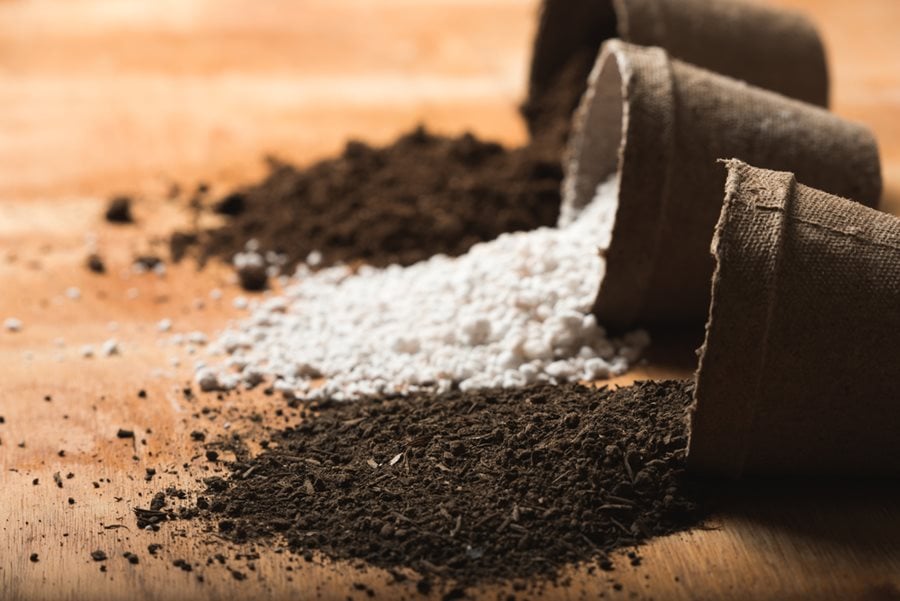
Source Image: www.gardendesign.com
Comparing Peat-Based Mixes to Other Media
Understanding how peat-based mixes stack up against alternative growing media provides insights into their suitability and advantages.
Coir-Based Mixes
| Comparison Factor | Peat-Based Mixes | Coir-Based Mixes |
|---|---|---|
| Composition | Derived from peat moss with additives like perlite and vermiculite. | Made from coconut husks, offering similar water retention and aeration properties. |
| Sustainability | Concerns over peat bog depletion; efforts towards sustainable sourcing. | Renewable resource; supports eco-friendly gardening practices. |
| pH Levels | Acidic; suitable for acid-loving plants. | Neutral pH; versatile for a wide range of plants. |
| Environmental Impact | Carbon footprint from extraction and processing; slow regeneration of peat bogs. | Lower carbon footprint; promotes sustainable gardening practices. |
Coir-based mixes offer a sustainable alternative with comparable benefits, appealing to environmentally conscious gardeners.
Soil-Based Mixes
| Comparison Factor | Peat-Based Mixes | Soil-Based Mixes |
|---|---|---|
| Structure | Light and well-draining; suitable for container gardening. | Stable structure with added organic matter; ideal for outdoor beds and borders. |
| Nutrient Retention | Good moisture retention and nutrient availability; requires regular fertilization. | Nutrient-rich; less frequent need for fertilization compared to peat-based mixes. |
| Plant Compatibility | Ideal for acid-loving plants and container gardening. | Suitable for a wide range of plants; enhances soil fertility in garden beds. |
Choosing between peat-based and soil-based mixes depends on gardening goals, plant preferences, and environmental considerations.
Peat-Free Commercial Mixes
| Comparison Factor | Peat-Based Mixes | Peat-Free Commercial Mixes |
|---|---|---|
| Composition | Primary component is peat moss; supplemented with perlite and additives. | Blend of materials like compost, coir, and pine bark; varies by brand and formulation. |
| Sustainability | Potential environmental impact from peat extraction; ongoing sustainability efforts. | Lower environmental impact; supports sustainable gardening practices. |
| Performance | Excellent moisture retention and drainage balance; proven track record in gardening. | Varied performance based on formulation; requires specific selection for optimal results. |
Peat-free mixes offer viable alternatives with reduced environmental impact, promoting eco-friendly gardening solutions.
Innovative Uses of Peat-Based Mixes
Beyond traditional gardening, peat-based mixes find innovative applications in specialized gardening techniques and systems.
Vertical Gardening Applications
| Application | Benefits |
|---|---|
| Vertical Gardens | Lightweight mixes support vertical plant growth; enhanced water distribution and drainage. |
| Living Walls | Provides stable growing medium for diverse plant varieties; promotes urban green spaces. |
Peat-based mixes facilitate creative urban gardening solutions, maximizing space and aesthetics.
Terrariums and Miniature Gardens
| Application | Advantages |
|---|---|
| Terrariums | Maintains moisture levels for enclosed ecosystems; supports miniature plant growth. |
| Fairy Gardens | Lightweight and nutrient-rich; fosters whimsical garden designs and plant displays. |
Using peat-based mixes enhances the viability and aesthetics of small-scale indoor gardening projects.
Hydroponic and Semi-Hydroponic Systems
| Application | Features |
|---|---|
| Hydroponics | Absorbs and retains water; supports nutrient delivery in soil-less growing systems. |
| Aquaponics | Facilitates plant growth with integrated fish waste; promotes sustainable food production. |
Peat-based mixes adapt to hydroponic and aquaponic setups, providing essential support for plant growth without soil.

Source Image: www.etsy.com
Peat-based Mixes
Peat-Based Mixes for Specific Plant Categories
Tailoring peat-based mixes to different plant types ensures optimal growth conditions and enhances gardening success.
Mixes for Vegetables and Herbs
| Plant Type | Recommended Mix Characteristics |
|---|---|
| Tomatoes, Peppers | Peat moss blend with perlite for good drainage and nutrient retention. |
| Basil, Cilantro | Light, well-aerated mix to promote root development and herb production. |
Customized mixes support robust growth and flavor development in culinary herbs and vegetables.
Ornamental Plants and Flowers
| Plant Type | Ideal Mix Composition |
|---|---|
| Roses, Azaleas | Acidic peat-based mix with added compost for moisture retention and nutrition. |
| Annual Flowers | Perlite-rich blend for optimal drainage and vibrant bloom displays. |
Choosing appropriate mixes enhances aesthetic appeal and longevity of ornamental gardens.
Specialty Plants (e.g., Orchids, Bonsai)
| Plant Type | Specialized Mix Requirements |
|---|---|
| Orchids | Coarse peat moss mix with bark for excellent aeration and moisture control. |
| Bonsai | Fine-textured mix with added sand for precise water management and root health. |
Tailored mixes cater to unique needs of specialty plants, promoting healthy growth and longevity.
Expert Tips and Recommendations
Insights from horticulturists and experienced gardeners provide valuable guidance for maximizing the benefits of peat-based mixes.
Insights from Professional Horticulturists
- Dr. Green, Horticulturist: “Choosing the right mix is crucial; peat-based mixes offer excellent water retention and aeration, ideal for container gardening.”
- Lisa Gardner, Master Gardener: “Mixes with perlite and vermiculite help prevent root suffocation and ensure plants receive adequate oxygen.”
Drawing on expert advice enhances gardening practices, ensuring optimal plant health and growth in peat-based mixes.
Tips for Beginners and Advanced Gardeners
- Beginner Tip: “Start with pre-mixed peat-based products to simplify gardening tasks and ensure consistent plant care.”
- Advanced Tip: “Experiment with customizing mixes by adding organic amendments like compost or worm castings for enhanced soil fertility.”
Tailoring advice to skill levels empowers gardeners to achieve successful outcomes and enjoy the rewards of gardening with peat-based mixes.
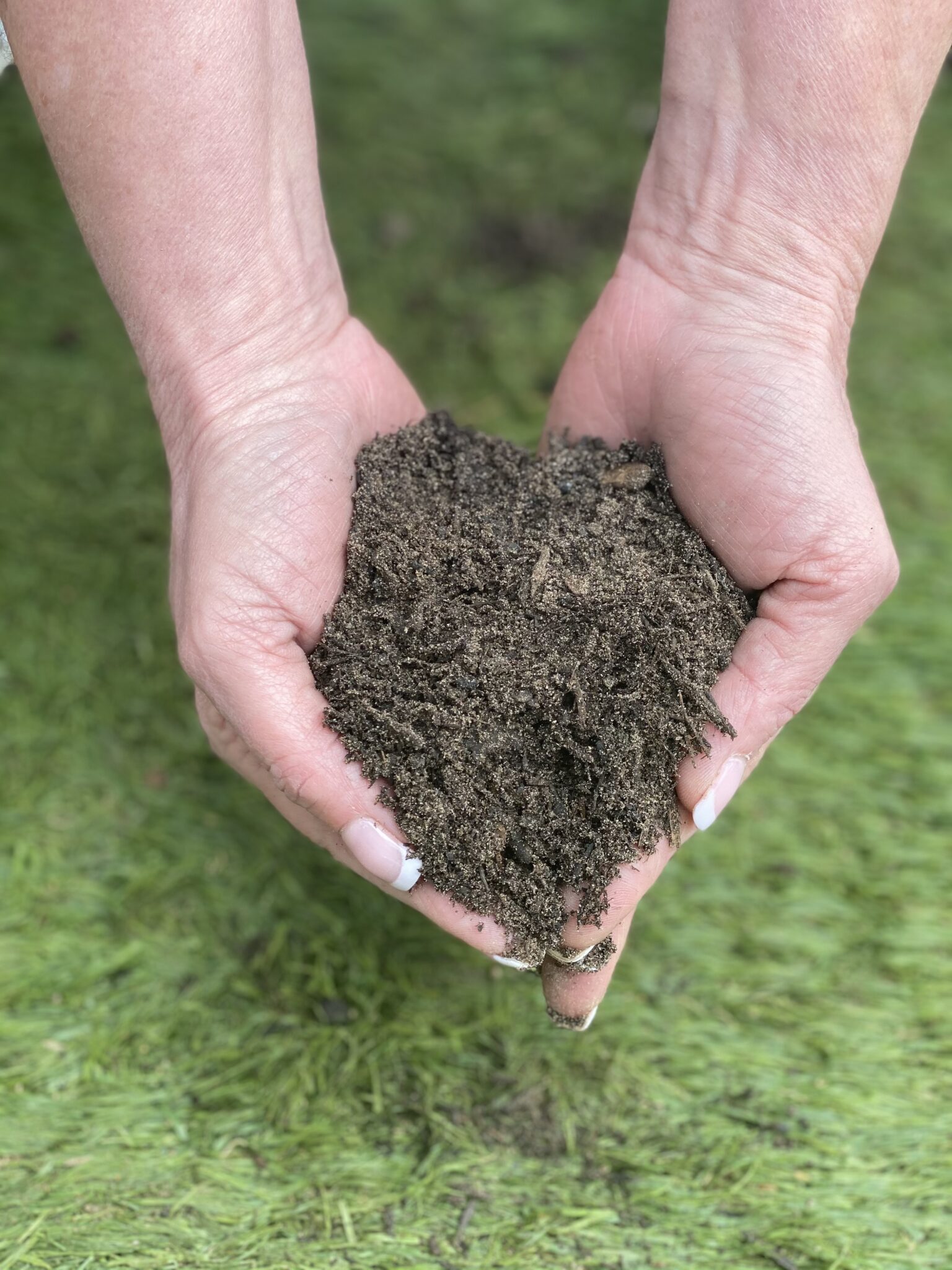
Source Image: wesellgrass.com
Common Myths and Facts About Peat-Based Mixes
Addressing misconceptions clarifies the benefits and considerations associated with using peat-based mixes in gardening.
Myth: Peat-Based Mixes Harm the Environment
Fact: While peat extraction can impact ecosystems, sustainable practices and alternatives like coir-based mixes promote responsible gardening.
Myth: Peat Mixes Cause Soil Compaction
Fact: Proper mix composition with perlite and vermiculite enhances drainage and prevents compaction, ensuring healthy root development.
Myth: Peat-Based Mixes Are Not Sustainable
Fact: Efforts in sustainable peat harvesting and alternatives support eco-friendly gardening practices, reducing environmental impact.
Innovative Uses of Peat-Based Mixes
Beyond traditional applications, peat-based mixes offer versatility in specialized gardening techniques and systems.
Vertical Gardening Applications
| Application | Benefits |
|---|---|
| Vertical Gardens | Lightweight mixes support vertical plant growth; enhanced water distribution and drainage. |
| Living Walls | Provides stable growing medium for diverse plant varieties; promotes urban green spaces. |
Peat-based mixes facilitate creative urban gardening solutions, maximizing space and aesthetics.
Terrariums and Miniature Gardens
| Application | Advantages |
|---|---|
| Terrariums | Maintains moisture levels for enclosed ecosystems; supports miniature plant growth. |
| Fairy Gardens | Lightweight and nutrient-rich; fosters whimsical garden designs and plant displays. |
Using peat-based mixes enhances the viability and aesthetics of small-scale indoor gardening projects.
Hydroponic and Semi-Hydroponic Systems
| Application | Features |
|---|---|
| Hydroponics | Absorbs and retains water; supports nutrient delivery in soil-less growing systems. |
| Aquaponics | Facilitates plant growth with integrated fish waste; promotes sustainable food production. |
Peat-based mixes adapt to hydroponic and aquaponic setups, providing essential support for plant growth without soil.
Maintenance and Refreshing Peat-Based Mixes
Regular maintenance ensures longevity and effectiveness of peat-based mixes, promoting sustained plant health and growth.
Signs It’s Time to Refresh the Mix
| Indicators | Signs |
|---|---|
| Compacted Texture | Mix feels dense and hard, hindering root penetration and water absorption. |
| Nutrient Depletion | Plants show stunted growth despite regular fertilization; leaves pale or yellow. |
Recognizing these signs prompts timely action to rejuvenate the mix and maintain optimal growing conditions.
How to Safely Replace or Rejuvenate Mixes
| Refreshing Methods | Techniques |
|---|---|
| Partial Mix Replacement | Remove top layer of old mix; replenish with fresh mix and nutrients as needed. |
| Complete Mix Replacement | Replace entire mix when plants are dormant or during repotting; amend with compost. |
Refreshing mixes revitalizes soil structure and nutrient content, supporting continued plant vitality.
Long-Term Maintenance Tips
| Maintenance Practices | Guidelines |
|---|---|
| Mulching | Apply mulch to conserve moisture, regulate soil temperature, and deter weeds. |
| Regular Inspection | Monitor plant health, adjust watering and fertilization based on seasonal needs. |
Consistent maintenance fosters a healthy growing environment, ensuring sustained plant performance in peat-based mixes.

